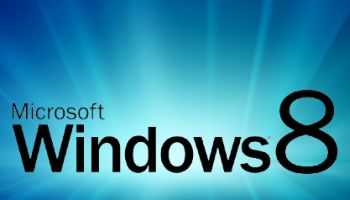Ballmer Windows 8 Statement Stirs Up Microsoft

CEO Steve Ballmer’s “misstatement” that Windows 8 will arrive in 2012 has set Microsoft officials into denial mode
Microsoft CEO Steve Ballmer apparently confirmed that Windows 8 will make its debut in 2012 and appear on a variety of systems, including tablets and PCs.
“As we look forward to the next generation of Windows systems, which will come out next year, there’s a whole lot more coming,” he told the audience at the Microsoft Developer Forum in Tokyo, according to a transcript published on Microsoft’s Website. “As we progress through the year, you ought to expect to hear a lot about Windows 8. Windows 8 slates, tablets, PCs, a variety of different form factors.”
Lost In Translation
 Barely had the words left Ballmer’s mouth before the blogosphere began parsing them. Did his use of “tablets” and “slates” mean two different form factors in the pipeline, or was he merely using both terms to emphasise a singular touch-screen form factor? Will the next version of Windows include a singular interface, or multiple versions for multiple devices?
Barely had the words left Ballmer’s mouth before the blogosphere began parsing them. Did his use of “tablets” and “slates” mean two different form factors in the pipeline, or was he merely using both terms to emphasise a singular touch-screen form factor? Will the next version of Windows include a singular interface, or multiple versions for multiple devices?
Steven Sinofsky, president of the Windows and Windows Live division, will appear at the ninth D:All Things Digital conference scheduled to kick off on May 31 in California – and perhaps offer a glimpse of Windows 8 in action.
Even as it printed Ballmer’s comments on its Website, Microsoft seemed intent on tamping down the burst of Windows 8 news. “It appears there was a misstatement,” a Microsoft spokesperson wrote in a statement circulated to media. “To date, we have yet to formally announce any timing or naming for the next version of Windows.”
Microsoft could be concerned that premature news of the next version of Windows would curb momentum for Windows 7, released in October 2009. Windows 7 has sold well among consumers and the enterprise, though only gradually eroding the market share held by the nearly decade-old Windows XP and helping erase memories of the much-maligned Windows Vista.
Sinofsky announced during this year’s Consumer Electronics Show in January that the next-generation platform will support SoC (system-on-a-chip) architecture, in particular ARM-based systems from partners such as Qualcomm, Nvidia and Texas Instruments. That would give Microsoft the ability to port the next Windows – dubbed “Windows 8” by some in the media, although no official name has been announced – onto tablets and other mobile form factors powered by ARM offerings.
“Under the hood, there are a ton of differences that need to be worked through,” Sinofsky told the audience during his CES presentation. Nonetheless, he added, “Windows has proven remarkably flexible at this under-the-hood sort of stuff.”
Beyond that, however, Microsoft has kept details of the next Windows firmly under wraps. In April, bloggers Rafael Rivera and Paul Thurrott dissected various features of what they called an early operating-system build on Rivera’s Within Windows blog. According to those postings, the next version of Windows could incorporate an Office-style ribbon interface into Windows Explorer, complete with tools for viewing libraries and manipulating images. The bloggers also included a screenshot of an early device-unlock window, done in the “Metro” design style already present in Windows Phone.